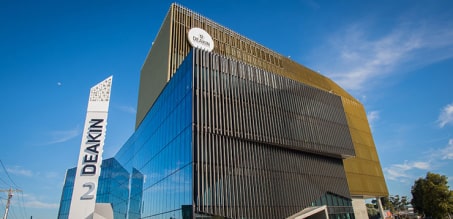- Great Learning
- Free Courses
- Data Science
Earn a certificate & get recognized
Basics of Time Series in Data Science
Learn Forecasting, Multivariate Time Series in R, COVID Data Analysis, Stock Market Prediction in Python, and more. Dive into the essentials of Time Series in Data Science today!
Instructor:
Mr. Bharani AkellaBasics of Time Series in Data Science
916 learners enrolled so far
Stand out with an industry-recognized certificate
10,000+ certificates claimed, get yours today!
Get noticed by top recruiters
Share on professional channels
Globally recognised
Land your dream job

Skills you will gain
Basics of Time Series
Key Highlights
Get free course content
Master in-demand skills & tools
Test your skills with quizzes
About this course
Dive into our Basics of Time Series in Data Science course, where each section is crafted to elevate your proficiency in forecasting, Multivariate Time Series in R, COVID data analysis, Python-based stock market prediction, and manufacturing industry applications. With a focus on real-world scenarios, this course offers a hands-on approach to mastering time series analysis, providing practical skills for aspiring data scientists and industry professionals alike. Uncover the potential of time-dependent data and position yourself at the forefront of data-driven innovation.
Ready to go beyond the basics? Take your data analytics skills to the next level. Check out our PGP in Data Science and Business Analytics.
Course outline
What is Forecasting?
Understand the fundamental concepts and methodologies involved in predicting future trends and outcomes based on historical data and analysis.
Multivariate Time Series Forecasting in R
Develop expertise in using R for predicting multiple interrelated variables over time, enabling advanced analysis and forecasting in multivariate time series scenarios.
Multivariate Time Series on COVID Data
Apply multivariate time series analysis techniques to COVID-19 data, gaining insights into the interconnected dynamics of various factors related to the pandemic for informed decision-making.
Time Series Analysis Stock Market Prediction Python
Master time series analysis using Python for stock market prediction, acquiring skills to analyze historical stock data, identify patterns, and build predictive models to inform investment strategies.
Time Series in Manufacturing Industry
Learn how time series analysis can be applied in the manufacturing industry to optimize production schedules, predict equipment maintenance needs, and enhance overall operational efficiency.
Get access to the complete curriculum once you enroll in the course
Stand out with an industry-recognized certificate
10,000+ certificates claimed, get yours today!
Get noticed by top recruiters
Share on professional channels
Globally recognised
Land your dream job

Basics of Time Series in Data Science
7.5 Hours
Intermediate
916 learners enrolled so far
Get free course content
Master in-demand skills & tools
Test your skills with quizzes
Refer and earn
Get learning discounts up to $20
Our course instructor

Mr. Bharani Akella
Data Scientist
Data Science Expert
Frequently Asked Questions
Will I receive a certificate upon completing this free course?
Is this course free?
What prerequisites are required to enrol in this Free Time Series in Data Science course?
You do not need any prior knowledge to enrol in this Time Series in Data Science course.
What prerequisites are required to enrol in this Free Time Series in Data Science course?
You do not need any prior knowledge to enrol in this Time Series in Data Science course.
How long does it take to complete this Free Time Series in Data Science course?
It is a 6.0 hour long course, but it is self-paced. Once you enrol, you can take your own time to complete the course.
Will I have lifetime access to the free course?
Yes, once you enrol in the course, you will have lifetime access to any of the Great Learning Academy’s free courses. You can log in and learn whenever you want to.
Will I get a certificate after completing this Free Time Series in Data Science course?
Yes, you will get a certificate of completion after completing all the modules and cracking the assessment.
How much does this Time Series in Data Science course cost?
It is an entirely free course from Great Learning Academy.
Is there any limit on how many times I can take this free course?
No. There is no limit. Once you enrol in the Free Time Series in Data Science course, you have lifetime access to it. So, you can log in anytime and learn it for free online.
Become a Skilled Professional with Pro Courses
Gain work-ready skills with guided projects, top faculty and AI tools, all at an affordable price.


View Course

Included with Pro+ Subscription

View Course

Included with Pro+ Subscription
.jpg)
View Course

Included with Pro+ Subscription


View Course

Included with Pro+ Subscription


View Course

Included with Pro+ Subscription

View Course

Included with Pro+ Subscription

View Course

Included with Pro+ Subscription

View Course

Included with Pro+ Subscription




View Course

Included with Pro+ Subscription

View Course

Included with Pro+ Subscription

View Course

Included with Pro+ Subscription
.jpg)
View Course

Included with Pro+ Subscription

View Course

Included with Pro+ Subscription

View Course

Included with Pro+ Subscription


View Course

Included with Pro+ Subscription


View Course

Included with Pro+ Subscription


View Course

Included with Pro+ Subscription


View Course

Included with Pro+ Subscription


View Course

Included with Pro+ Subscription




View Course

Included with Pro+ Subscription

View Course

Included with Pro+ Subscription

View Course

Included with Pro+ Subscription

View Course

Included with Pro+ Subscription

View Course

Included with Pro+ Subscription
.png)
View Course

Included with Pro+ Subscription
.jpg)
View Course

Included with Pro+ Subscription

View Course

Included with Pro+ Subscription

View Course

Included with Pro+ Subscription

View Course

Included with Pro+ Subscription
.png)
View Course

Included with Pro+ Subscription

View Course

Included with Pro+ Subscription

View Course

Included with Pro+ Subscription

View Course

Included with Pro+ Subscription


View Course

Included with Pro+ Subscription

View Course

Included with Pro+ Subscription

View Course

Included with Pro+ Subscription
.png)
View Course

Included with Pro+ Subscription
.jpg)
View Course

Included with Pro+ Subscription
.jpeg)
View Course

Included with Pro+ Subscription
.jpg)
View Course

Included with Pro+ Subscription
.jpg)
View Course

Included with Pro+ Subscription

View Course

Included with Pro+ Subscription

View Course

Included with Pro+ Subscription


View Course

Included with Pro+ Subscription


View Course

Included with Pro+ Subscription


View Course

Included with Pro+ Subscription
.png)
View Course

Included with Pro+ Subscription



.png)


View Course

Included with Pro+ Subscription


View Course

Included with Pro+ Subscription

View Course

Included with Pro+ Subscription

View Course

Included with Pro+ Subscription
.png)
View Course

Included with Pro+ Subscription
.png)
View Course

Included with Pro+ Subscription
.png)
View Course

Included with Pro+ Subscription
Popular


View Course

Included with Pro+ Subscription

View Course

Included with Pro+ Subscription
.jpg)
View Course

Included with Pro+ Subscription


View Course

Included with Pro+ Subscription


View Course

Included with Pro+ Subscription

View Course

Included with Pro+ Subscription

View Course

Included with Pro+ Subscription

View Course

Included with Pro+ Subscription
AI & Generative AI




View Course

Included with Pro+ Subscription

View Course

Included with Pro+ Subscription

View Course

Included with Pro+ Subscription
.jpg)
View Course

Included with Pro+ Subscription

View Course

Included with Pro+ Subscription

View Course

Included with Pro+ Subscription
Microsoft Courses


View Course

Included with Pro+ Subscription


View Course

Included with Pro+ Subscription


View Course

Included with Pro+ Subscription


View Course

Included with Pro+ Subscription


View Course

Included with Pro+ Subscription


Data Science & ML


View Course

Included with Pro+ Subscription

View Course

Included with Pro+ Subscription

View Course

Included with Pro+ Subscription

View Course

Included with Pro+ Subscription

View Course

Included with Pro+ Subscription
.png)
View Course

Included with Pro+ Subscription
IT & Software
.jpg)
View Course

Included with Pro+ Subscription

View Course

Included with Pro+ Subscription

View Course

Included with Pro+ Subscription

View Course

Included with Pro+ Subscription
.png)
View Course

Included with Pro+ Subscription

View Course

Included with Pro+ Subscription

View Course

Included with Pro+ Subscription

View Course

Included with Pro+ Subscription


View Course

Included with Pro+ Subscription
 (1).png)
View Course

Included with Pro+ Subscription


View Course

Included with Pro+ Subscription

View Course

Included with Pro+ Subscription


View Course

Included with Pro+ Subscription

View Course

Included with Pro+ Subscription

View Course

Included with Pro+ Subscription
.png)
View Course

Included with Pro+ Subscription
.png)
View Course

Included with Pro+ Subscription

View Course

Included with Pro+ Subscription

View Course

Included with Pro+ Subscription

View Course

Included with Pro+ Subscription

View Course

Included with Pro+ Subscription

View Course

Included with Pro+ Subscription
Management

View Course

Included with Pro+ Subscription

View Course

Included with Pro+ Subscription
.png)
View Course

Included with Pro+ Subscription
.jpg)
View Course

Included with Pro+ Subscription
.jpeg)
View Course

Included with Pro+ Subscription
.jpg)
View Course

Included with Pro+ Subscription
.jpg)
View Course

Included with Pro+ Subscription

View Course

Included with Pro+ Subscription

View Course

Included with Pro+ Subscription
.png)
View Course

Included with Pro+ Subscription
.png)
View Course

Included with Pro+ Subscription
.png)
View Course

Included with Pro+ Subscription
.png)
View Course

Included with Pro+ Subscription
.png)
View Course

Included with Pro+ Subscription
 (1).jpg)
View Course

Included with Pro+ Subscription

View Course

Included with Pro+ Subscription
Cloud Computing


View Course

Included with Pro+ Subscription


View Course

Included with Pro+ Subscription


View Course

Included with Pro+ Subscription
.png)
View Course

Included with Pro+ Subscription



.png)


View Course

Included with Pro+ Subscription


View Course

Included with Pro+ Subscription
.png)

View Course

Included with Pro+ Subscription
.jpg)

.jpg)

.png)

View Course

Included with Pro+ Subscription


Cyber Security

View Course

Included with Pro+ Subscription

View Course

Included with Pro+ Subscription
.png)
View Course

Included with Pro+ Subscription
.png)
View Course

Included with Pro+ Subscription
.png)
View Course

Included with Pro+ Subscription
Subscribe to Academy Pro+ & get exclusive features
$25/month
No credit card required

Learn from 40+ Pro courses

Access 500+ certificates for free

700+ Practice exercises & guided projects

Prep with AI mock interviews & resume builder
Recommended Free Data Science courses




Similar courses you might like




Related Data Science Courses
-
Personalized Recommendations
Placement assistance
Personalized mentorship
Detailed curriculum
Learn from world-class faculties
50% Average salary hike -


12 weeks · Online
Know More
-


MIT Professional Education
Applied AI and Data Science Program14 Weeks · Live Online · Weekdays & Weekend
Know More
-


Deakin University
Master of Data Science (Global) Program24 Months · Online
Top 1% UniversityKnow More
Relevant Career Paths >
Basics of Time Series in Data Science
Time series analysis is a critical component of data science that deals with sequences of data points ordered by time. These data points are typically collected at regular intervals, and the goal of time series analysis is to extract meaningful insights, patterns, and trends from this temporal data. Time series analysis plays a crucial role in various fields, including finance, economics, weather forecasting, healthcare, and more.
One of the fundamental characteristics of time series data is its temporal dependency. The value of a data point at a specific time is often influenced by its past values, making time series data inherently sequential. Understanding and leveraging this sequential nature is essential for making accurate predictions and informed decisions.
Time series analysis encompasses several key components, including:
- Trend Analysis: Identifying the long-term movement or directionality in the data. Trends can be upward, downward, or even exhibit periodic patterns.
- Seasonal Patterns: Recognizing repetitive patterns or cycles that occur at fixed intervals, such as daily, monthly, or yearly variations. Seasonal patterns often result from external factors like holidays, weather changes, or economic cycles.
- Noise and Irregularities: Separating random fluctuations or noise from the underlying patterns is crucial for accurate analysis. Noise can obscure meaningful insights, and filtering it out helps in focusing on the essential aspects of the time series.
- Autocorrelation: Examining the correlation of a time series with its past values, which provides insights into the persistence of patterns over time.
- Forecasting: Predicting future values based on historical data. Time series forecasting is used in various applications, such as predicting stock prices, demand for products, or weather conditions.
- Anomaly Detection: Identifying unusual or unexpected patterns in the data, which could indicate errors, fraud, or other noteworthy events.
In data science, several techniques and models are employed for time series analysis:
- Moving Averages: A simple method that smoothens the data by averaging consecutive subsets of values. This helps in highlighting trends and reducing the impact of noise.
- Exponential Smoothing: A more advanced approach that assigns different weights to past observations, with more recent observations receiving higher weights.
- ARIMA (AutoRegressive Integrated Moving Average): A popular and powerful time series forecasting model that combines autoregressive and moving average components.
- Machine Learning Models: Advanced algorithms such as decision trees, random forests, and neural networks can be applied to time series data for more accurate predictions, especially when dealing with complex patterns.
- Long Short-Term Memory (LSTM) Networks: A type of recurrent neural network (RNN) particularly effective in capturing long-term dependencies in time series data.
The application of time series analysis in data science extends to various domains. For instance, in finance, it helps in predicting stock prices and analyzing market trends. In healthcare, it aids in forecasting patient admission rates, while in manufacturing, it can optimize production schedules based on demand patterns.
In conclusion, time series analysis is a critical aspect of data science, enabling professionals to gain valuable insights, make informed predictions, and optimize decision-making processes. As technology continues to advance, the methods and models used in time series analysis will likely evolve, providing even more accurate and sophisticated tools for understanding and harnessing the power of temporal data.














